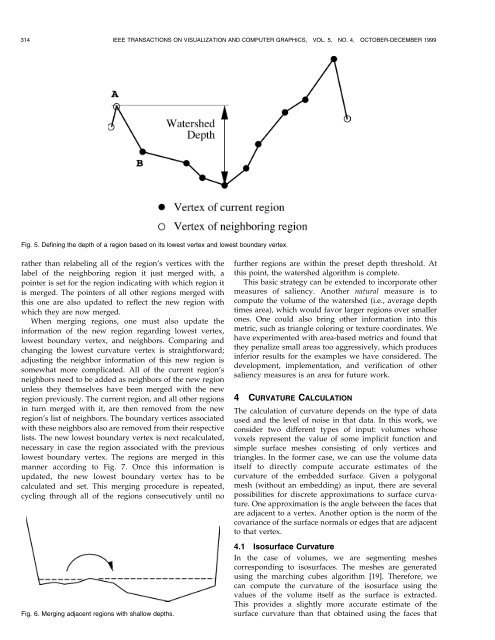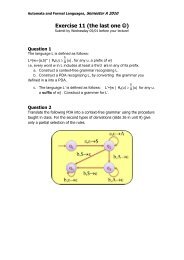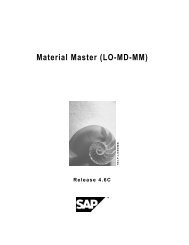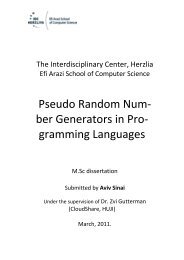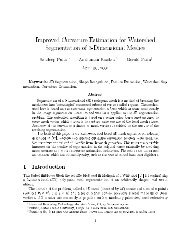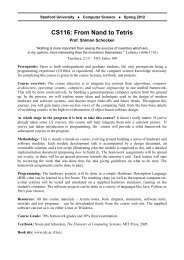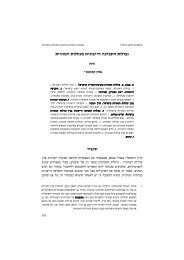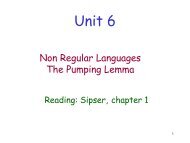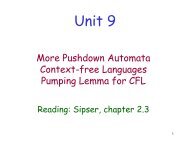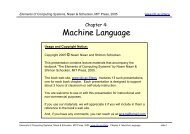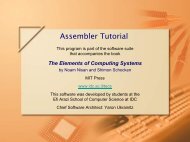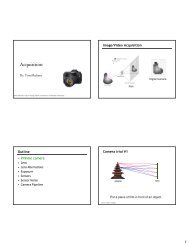Partitioning 3D Surface Meshes Using Watershed Segmentation
Partitioning 3D Surface Meshes Using Watershed Segmentation
Partitioning 3D Surface Meshes Using Watershed Segmentation
You also want an ePaper? Increase the reach of your titles
YUMPU automatically turns print PDFs into web optimized ePapers that Google loves.
314 IEEE TRANSACTIONS ON VISUALIZATION AND COMPUTER GRAPHICS, VOL. 5, NO. 4, OCTOBER-DECEMBER 1999<br />
Fig. 5. Defining the depth of a region based on its lowest vertex and lowest boundary vertex.<br />
rather than relabeling all of the region's vertices with the<br />
label of the neighboring region it just merged with, a<br />
pointer is set for the region indicating with which region it<br />
is merged. The pointers of all other regions merged with<br />
this one are also updated to reflect the new region with<br />
which they are now merged.<br />
When merging regions, one must also update the<br />
information of the new region regarding lowest vertex,<br />
lowest boundary vertex, and neighbors. Comparing and<br />
changing the lowest curvature vertex is straightforward;<br />
adjusting the neighbor information of this new region is<br />
somewhat more complicated. All of the current region's<br />
neighbors need to be added as neighbors of the new region<br />
unless they themselves have been merged with the new<br />
region previously. The current region, and all other regions<br />
in turn merged with it, are then removed from the new<br />
region's list of neighbors. The boundary vertices associated<br />
with these neighbors also are removed from their respective<br />
lists. The new lowest boundary vertex is next recalculated,<br />
necessary in case the region associated with the previous<br />
lowest boundary vertex. The regions are merged in this<br />
manner according to Fig. 7. Once this information is<br />
updated, the new lowest boundary vertex has to be<br />
calculated and set. This merging procedure is repeated,<br />
cycling through all of the regions consecutively until no<br />
Fig. 6. Merging adjacent regions with shallow depths.<br />
further regions are within the preset depth threshold. At<br />
this point, the watershed algorithm is complete.<br />
This basic strategy can be extended to incorporate other<br />
measures of saliency. Another natural measure is to<br />
compute the volume of the watershed (i.e., average depth<br />
times area), which would favor larger regions over smaller<br />
ones. One could also bring other information into this<br />
metric, such as triangle coloring or texture coordinates. We<br />
have experimented with area-based metrics and found that<br />
they penalize small areas too aggressively, which produces<br />
inferior results for the examples we have considered. The<br />
development, implementation, and verification of other<br />
saliency measures is an area for future work.<br />
4 CURVATURE CALCULATION<br />
The calculation of curvature depends on the type of data<br />
used and the level of noise in that data. In this work, we<br />
consider two different types of input: volumes whose<br />
voxels represent the value of some implicit function and<br />
simple surface meshes consisting of only vertices and<br />
triangles. In the former case, we can use the volume data<br />
itself to directly compute accurate estimates of the<br />
curvature of the embedded surface. Given a polygonal<br />
mesh (without an embedding) as input, there are several<br />
possibilities for discrete approximations to surface curvature.<br />
One approximation is the angle between the faces that<br />
are adjacent to a vertex. Another option is the norm of the<br />
covariance of the surface normals or edges that are adjacent<br />
to that vertex.<br />
4.1 Isosurface Curvature<br />
In the case of volumes, we are segmenting meshes<br />
corresponding to isosurfaces. The meshes are generated<br />
using the marching cubes algorithm [19]. Therefore, we<br />
can compute the curvature of the isosurface using the<br />
values of the volume itself as the surface is extracted.<br />
This provides a slightly more accurate estimate of the<br />
surface curvature than that obtained using the faces that


